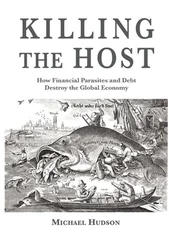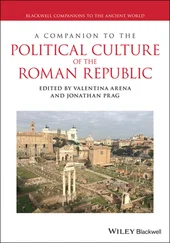A Companion to the Global Renaissance
Здесь есть возможность читать онлайн «A Companion to the Global Renaissance» — ознакомительный отрывок электронной книги совершенно бесплатно, а после прочтения отрывка купить полную версию. В некоторых случаях можно слушать аудио, скачать через торрент в формате fb2 и присутствует краткое содержание. Жанр: unrecognised, на английском языке. Описание произведения, (предисловие) а так же отзывы посетителей доступны на портале библиотеки ЛибКат.
- Название:A Companion to the Global Renaissance
- Автор:
- Жанр:
- Год:неизвестен
- ISBN:нет данных
- Рейтинг книги:5 / 5. Голосов: 1
-
Избранное:Добавить в избранное
- Отзывы:
-
Ваша оценка:
- 100
- 1
- 2
- 3
- 4
- 5
A Companion to the Global Renaissance: краткое содержание, описание и аннотация
Предлагаем к чтению аннотацию, описание, краткое содержание или предисловие (зависит от того, что написал сам автор книги «A Companion to the Global Renaissance»). Если вы не нашли необходимую информацию о книге — напишите в комментариях, мы постараемся отыскать её.
An innovative collection of original essays providing an expansive picture of globalization across the early modern world, now in its second edition A Companion to the Global Renaissance: Literature and Culture in the Era of Expansion, 1500–1700, Second Edition
Companion’s
A Companion to the Global Renaissance
cum
A Companion to the Global Renaissance: Literature and Culture in the Era of Expansion, 1500–1700, Second Edition
A Companion to the Global Renaissance — читать онлайн ознакомительный отрывок
Ниже представлен текст книги, разбитый по страницам. Система сохранения места последней прочитанной страницы, позволяет с удобством читать онлайн бесплатно книгу «A Companion to the Global Renaissance», без необходимости каждый раз заново искать на чём Вы остановились. Поставьте закладку, и сможете в любой момент перейти на страницу, на которой закончили чтение.
Интервал:
Закладка:
(II: 1.1.137–142)
The fanciful legend of Muhammad’s iron coffin, suspended by lodestones as a false miracle, was cited by Hanmer; the supposedly anti-idolatrous Turks practice superstition in visiting such shrines, as Catholics do. 4The “Alcaron,” no less than the spectacle of the Prophet’s tomb, is implicitly taken as a kind of idol in this passage. Yet Sigismond is the one who misrepresents himself in breaking his oath, causing the faithful Orcanes to offer theological arguments against idolatry. “Can there be such deceit in Christians,” he asks, “Whose shape is figure of the highest God?” (II: 2.2.36, 37). His question looks forward to William Bedwell’s Mohammedis imposturae of 1615, a dialogue published by one of the first Arabic scholars in England, which begins with “Sheich Sinan” citing the creation of man in the “forme and similitude” of God as a prelude to the rejection of idols and human images (B2 recto–B3 recto). Bedwell claims to have translated his tract from an original text by a Christian Arab. The name Sinan is common in Arabic and Turkish, and it sounds like Hanmer’s “Chinano” as well. Perhaps some stock name for a Muslim is reflected in these texts, part of a lost English tradition of legendary converts and their crossover beliefs.
The rest of Orcanes’s speech uses terms that Sinan, and also of course most Christian thinkers, would understand. Tearing the treaty, he calls on Christ as his sign of victory while imagining a God who cannot be reduced to spatial or visual form:
he that sits on high and never sleeps
Nor in one place is circumscriptible,
But everywhere fills every continent
With strange infusion of his sacred vigor.
(II: 2.2.49–52)
The godhead is like the world here, continental in range but uncircumscribed by any map or globe. It has long been recognized that Marlowe’s episode is based on a mid-fifteenth-century clash of worlds, the Hungarian King Vladislaus’s oath-breaking with Amurath II before the battle of Varna. The story is recounted in a Latin history of Hungary that Marlowe may also have seen in translation before it was published in 1603 by Richard Knolles in his Generall Historie of the Turkes (“Introduction,” in Marlowe, 17). Here, Amurath, “beholding the picture of the Crucifix in the displaied ensignes of the voluntarie Christians,” brandishes the treaty document and calls on Christ to revenge the Hungarians’ deceit (Knolles, 297). In the source, both Christian and Turk remain idolaters of a sort. Marlowe suppresses the pictured crucifixes and causes the Muslim to develop from idolater to iconoclast, or aniconist. Perhaps it is in this spirit, rather than simply an opportunistic one, that Orcanes claims either Christ or Muhammad as his friend, for each is the emissary of an invisible God (II: 2.3.11). As for Sigismond, his body will be left for birds to feed upon, “since this miscreant hath disgraced his faith/And died a traitor both to heaven and earth” (lines 36–37). Because Sigismond, the imperfect figure of the highest God, has committed perjury, his visible remains in the human body must be desecrated. With “miscreant” we are brought full circle back to the passage on the superstitious bells and foul idolatry of the Christians. The word appears just twice in Marlowe’s writings.
In the same speeches, Orcanes also imagines Sigismond’s fate in the afterlife:
Now scalds his soul in the Tartarian streams
And feeds upon the baneful tree of hell,
That Zoacum, that fruit of bitterness,
That in the midst of fire is engraft,
Yet flourisheth as Flora in her pride,
With apples like the heads of damned fiends.
(II: 2.3.18–23)
The Zoacum, or Zaqqum , tree appears in the Qur’an, principally in surah 37: “It grows in the nethermost part of Hell, bearing fruit like devils’ heads: on it they [the damned] shall feed, and with it they shall cram their bellies, together with draughts of scalding water” ( The Koran , 447; insertion mine). Do we have a remarkable instance of an early modern English playwright citing the Qur’an? In my view, we do (see also Al-Olaqi, 1733). In another classic article, Seaton argued instead that Marlowe found his fantastical tree in Lonicerus’s Chronicorum turcicorum , where the spelling “Zoacum” appears (Seaton, “Fresh Sources,” 385–387). The more usual Latin spelling is “ezecum,” she attests, but she does not cite its probable source: a twelfth-century Latin translation of the Qur’an by Robertus Retenensis (or Robert of Reading, now known as Robert of Chester), printed as Machumetis Sarracenorum principis (Basel: Joannes Oporinus, 1543). 5The Parker Library of Corpus Christi College, Cambridge, has a copy of the second edition of 1550. Although it cannot be proved to have been present in the collection during the late sixteenth century, this translation of the Qur’an is listed in the Parker Register of books bequeathed to Corpus Christi by Archbishop Matthew Parker in 1575. 6Corpus Christi was Marlowe’s college. Of course, as Park Honan has recently remarked in another context, even as an MA candidate Marlowe may not have had access to the prized books of the collection for one reason or another (Honan, 75–76). Yet it is worth noting that the detail of scalding water in descriptions of the tree, which appears in surah 37 and also in the other surahs where Zaqqum is explicitly mentioned (44, 56), is absent from Lonicerus but present in Marlowe’s version. 7Lonicerus begins the brief chapter where the tree appears by citing the “Curaam” on the treatment of the damned in general, and this rare word may designate the Qur’an or some putative Turkish digest of it in Europe’s odd early modern Eastern lexicon. 8If Marlowe consulted the Qur’an in Latin, cued by Lonicerus, he might also have found surah 56, where the scalding tree is juxtaposed with the assertion of Allah’s creative power ( The Koran , 535). Sigismond is punished for misrepresenting himself in his oath by Christ; by doing so, he defies his creation in the image of God.
Against my speculations, the simple fact of Marlowe’s not mentioning the Qur’an in his Zoacum passage must be set. And Marlowe does notoriously mention it later in Tamburlaine II:
Now, Casane, where’s that Turkish Alcaron
And all the heaps of superstitious books
Found in the temples of that Mahomet
Whom I have thought a god? They shall be burnt.
… There is a God full of revenging wrath,
From whom the thunder and the lightening breaks, Whose scourge I am, and him I will obey. So Casane, fling them in the fire.
(II: 5.1.172–175, 182–185)
It is worth revisiting these familiar lines. The “Alcaron” is now one of many “superstitious” or idolatrous books. The very word of God is treated by Tamburlaine as if it was a visual thing, a physical icon. The conqueror believes in a speechless God who, if not quite Orcanes’s placeless deity, also sits on high, above all mortal representation despite the meteorological imagery that Tamburlaine cannot leave behind. “Well, soldiers,” he taunts, “Mahomet remains in hell” (line 197), in effect with the Zoacum tree of the Alcaron itself, whether or not Marlowe knew fully of its source.
Without getting into the reasons for Tamburlaine’s sudden distemperment or illness, I would relate his death to the limits of visual and to some extent verbal representation in both plays. He may die from a humoral imbalance, or because he has burnt the Babylonians themselves rather than their Qur’an, but if Tamburlaine also dies from an act of hypericonoclasm he does so under a force that the text ultimately fails to render in iconic terms. The very confusion over his death, its overdetermination, makes it impossible to explain through narrative, which depends on cause and effect. His followers nevertheless strive to narrate and depict the coming event. In a passage that recalls Tamburlaine’s own struggles at Zenocrate’s passing, Theridamus tries to imagine spirit armies besieging Tamburlaine’s heart, and yet “These cowards invisibly assail his soul” (II: 5.3.13): that is, the causes dooming his master cannot be pictured. Tamburlaine is more successful:
Читать дальшеИнтервал:
Закладка:
Похожие книги на «A Companion to the Global Renaissance»
Представляем Вашему вниманию похожие книги на «A Companion to the Global Renaissance» списком для выбора. Мы отобрали схожую по названию и смыслу литературу в надежде предоставить читателям больше вариантов отыскать новые, интересные, ещё непрочитанные произведения.
Обсуждение, отзывы о книге «A Companion to the Global Renaissance» и просто собственные мнения читателей. Оставьте ваши комментарии, напишите, что Вы думаете о произведении, его смысле или главных героях. Укажите что конкретно понравилось, а что нет, и почему Вы так считаете.












